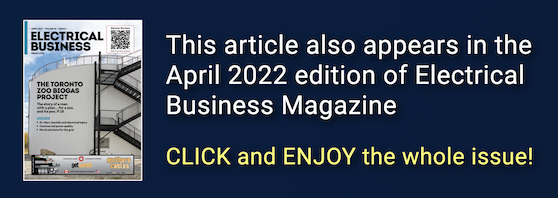
Features
Articles
Code File
Codes & Standards
What is equipotential grounding? – Code File, April 2022
April 22, 2022 | By David Pilon

April 22, 2022 – While the CE Code-Section 10 begins by addressing the difference between bonding and grounding, it does not yet suitably address equipotential grounding. Does that mean equipotential grounding doesn’t matter? Well, let’s first look at the definitions for ground and grounded.
Ground is defined as a connection to earth obtained by a grounding electrode.
Grounded is defined as being connected effectively with the general mass of earth through a grounding path of sufficiently low impedance, and having an ampacity sufficient at all times under the most severe conditions liable to arise in practice, to prevent any current in the grounding conductor from causing a harmful voltage to exist between the grounding conductors, and neighbouring exposed conductive surfaces that are in good contact with the earth, or between the grounding conductors and neighbouring surfaces of the earth itself.
That’s a mouthful, to be sure! But note that, in the second part of the definition for grounded, it refers to the earth and neighbouring surfaces of the earth.
So, let’s try to picture what’s going on. What is the intent, what are the concerns here? Why does the definition speak to the surface of the earth and neighbouring surfaces?
Generally, we assume a building or structure is sitting on the earth (makes sense) and, therefore, it has a reference to that piece of earth. However, the only way to ensure that reference is the same one to which the non-current-carrying parts are referenced is to conductively interconnect the earth to those non-current-carrying parts.
To achieve this, we need a grounding electrode connection to the earth. In a large complex, we do this by interconnecting steel work and rebar along with other non-current-carrying metal parts.
What happens, though, when we run a feeder or a branch circuit with a bonding conductor to a second building or structure? This second building is also referenced to the ground upon which it is situated; however, the non-current-carrying parts are referenced to the earth at the first building. As distances increase, the concern for a safe installation increases.
Note, the utility uses the earth as a return path for high-voltage systems; on a rural service, this earth return is also the ground for the low-voltage service grounded circuit conductor.
A fault on the high-voltage system or a lightning strike could create a huge hazard if we have no reference to the neighbouring surface of the earth and metallic equipment with which we are in contact.
Now add quadrupeds into the mix. Tingle voltage filters were invented to reduce the issue with current on the earth—currents that would cause quadrupeds to stop drinking or, in some cases, kill them.
Let’s say we feed a barn or watering bowl with a circuit that carries a bonded conductor going back to remote earth. What happens with stray voltages or issues around these buildings and watering bowls? What about the concrete and rebar used in the floors around these animals?
Hence, the importance of establishing an equipotential plane. We bond our circuits to the neighbouring earth, thereby equipotentially spreading any voltages across the earth in that area, creating a zero voltage.
While the issue of equipotentiality could still use a little work in the CE Code, I believe we have come a long way in preventing objectionable current on bonding conductors.
We have eliminated or greatly reduced the number of parallel neutral paths. We now need to carry the ball over the finish line and ensure we have equipotentiality throughout every installation by ensuring a ground at all buildings and structures, and each watering bowl at all points of access.

David Pilon is manager, Electrical Inspections, at Technical Safety Authority, Saskatchewan (TSASK). He also serves as vice-chair of the Canadian Certified Electrical Inspector (CCEI) committee of the International Association of Electrical Inspectors (IAEI), Canadian Section. He can be reached at david.pilon@tsask.ca.
You’ll find all our Back Issues in the Digital Archive.
Print this page
